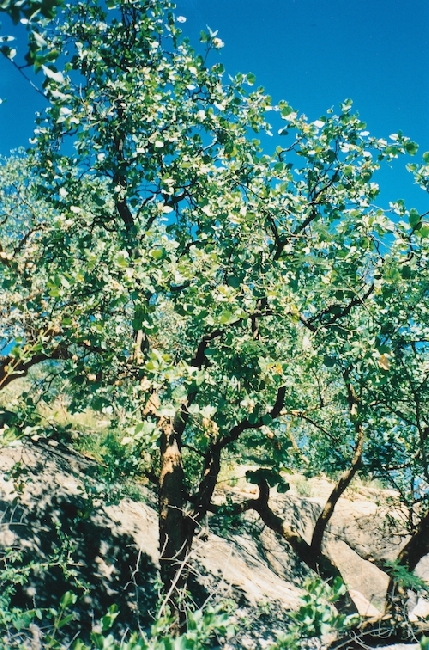BY the end of August and during September and Ocotber large spreading coral trees, covered in bright red flowers, are very conspicuous around the former State House and in many Windhoek gardens.
Their common name of course refers to the eye-catching colour of their flowers. The majority of these garden trees belong to two South African species: either Erythrina lysistemon or Erythrina caffra. Our indigenous coral tree is not usually as lush as the trees we see in gardens.
Yet its similarly shaped flowers are very obvious in the bush at this time of the year when most other plants are dry and grey.
The Namib coral tree is mostly found on rocky outcrops and hill slopes in central Namibia from north of Dordabis onwards, in the Karstveld and occasionally in the north-west. Sometimes it is common locally, but usually one finds single trees growing in scattered localities. It is endemic, meaning it is believed only to occur within the political boundaries of Namiba.
Names: G. Korallenbaum; A. Namibkoraalboom; H. omuninga; The botanical genus name Erythrina is derived from the Greek word for ‘red’, while decora has the same root as ‘decorated’, which of course refers to the lovely flowers.
The Namib coral tree is a deciduous shrub, or a small to very large tree, up to 9 m high. The bark is grey to dark grey, appearing almost black from a distance and sometimes fissured lengthwise showing a lighter underbark. While relatively smooth, it is also corky and may occasionally be deeply grooved. Young branchlets have a grey-white, finely woolly covering but rapidly become almost hairless. They have irregularly scattered hooked thorns.
The Namib coral tree is also conspicuous by its large grey-green velvety leaves consisting of three leaflets. The upper leaf becomes almost bare over time, while the underside remains finely woolly. The terminal leaflet is usually larger than the other two and wider than long. There are small hooked thorns on the underside of the midrib and on the leafstalk.
The flowers form a tightly packed erect cone-like spray up to 15 cm long. Young buds at the tip of the spray have a grey finely woolly covering. They develop into woody grey-brown pods deeply constricted between the individual seeds. The pods burst open along one seam and contain red seeds with a black spot at the point of attachment.
These colourful beans are said to be poisonous but only when a decoction prepared from them is injected into the flesh. According to my Otjiherero speaking informant they are edible causing a “very pleasant feeling as if one has eaten butter”.
The Hei//Om people pound these beans and use the paste to treat earache. The Ovahimba on the other hand use the red beans to decorate their trumpets made of oryx horns. A repetitive tune is played on these trumpets to keep together the cattle when migrating to better pastures.
Where frost occurs this coral tree does not develop into a tree but remains underground only sprouting branches bearing leaves, flowers and fruit without forming trunks.
This species can easil
Stay informed with The Namibian – your source for credible journalism. Get in-depth reporting and opinions for
only N$85 a month. Invest in journalism, invest in democracy –
Subscribe Now!






